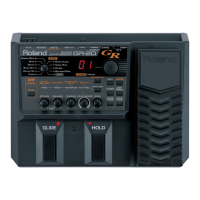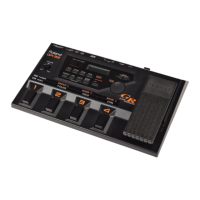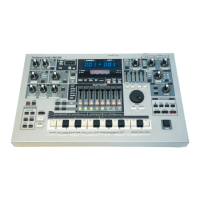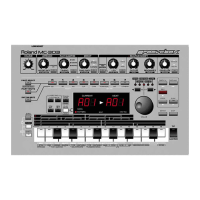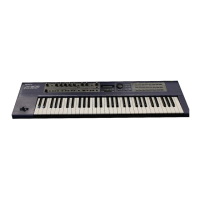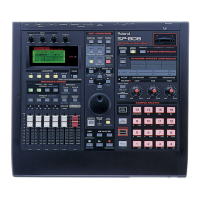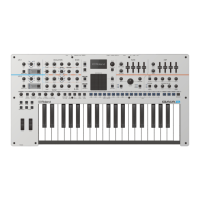10
Preparations for Using the GR-55
Adjusting Your Guitar Pickup
1. Use the cursor [ ] [ ] buttons to move the cursor to “PU
TYPE,” and use the dial to select the type of pickup that’s
installed on your guitar.
Value Description
GK-3 Choose this if you’re using a GK-3.
GK-2A Choose this if you’re using a GK-2A.
PIEZO
This setting is appropriate if you’re using a piezo pickup that
has a at response.
PIEZO F This setting is appropriate for a Fishman piezo pickup.
PIEZO G This setting is appropriate for a Graph Tech piezo pickup.
PIEZO L This setting is appropriate for an L.R. Baggs piezo pickup.
PIEZO R This setting is appropriate for an RMC piezo pickup.
A piezo pickup is a type of pickup that is mounted on the bridge of the
guitar, and uses a piezoelectric element to detect the vibrations of the
strings.
If you’re using a guitar equipped with a GK pickup that’s not of the
piezo type, choose “GK-2A.”
* If you’re not sure which piezo type setting is appropriate, try
selecting dierent choices while you play your guitar, and choose
the piezo type that produces the most natural sound. In this case,
the dierence will be easier to notice if you turn o the PCM 1 and 2
tone switches (p.25).
* If you’ve chosen PIEZO, PIEZO F, PIEZO G, PIEZO L, or PIEZO R as the
PU Type setting, you’ll be able to make further adjustments to the
tone quality of the high range and low range (p.74).
2. Use the cursor [ ] [ ] buttons to move the cursor to
“SCALE,” and use the dial to specify your guitar’s scale length
(the distance between the bridge and nut).
Choose the closest value in the range of 500–660 mm.
Choose “ST” (648 mm) for a standard Stratocaster type, or choose “LP”
(628 mm) for a Les Paul type. For details on the other parameters, refer
to “GK SETTING” (p.74).
3. Use the PAGE [ ] [ ] buttons to select the DIS tab.
4. Use the cursor [ ] [ ] buttons to select each string, and
for each string, specify the distance from the center of the
pickup to the bridge saddle.
* If PU TYPE is set to one of the piezo-type pickups, this setting is not
necessary.
5. Use the PAGE [ ] [ ] buttons to select the SEN tab.
6. Use the cursor [
] [ ] buttons to move the cursor to 6TH
STRING SENS.
Play the 6th string as strongly as you ever expect to play it in actual
performance, and use the dial to adjust the sensitivity as high as
possible without allowing the meter to reach the full-scale position.
* If the level meter reaches the full-scale position, the level is exces-
sive. Lower the sensitivity.
* Depending on the guitar you’re using, the level meter might reach
full-scale even if the sensitivity is at minimum. If this is the case,
adjust the distance between the divided pickup and the string so it’s
somewhat greater than the recommendation.
7. In the same way, adjust the sensitivity for the 5th through
1st strings as well.
8. Check the volume balance of the six strings.
Play each of the strings 6–1 at normal strength; if a string sounds
unusually loud, lower the sensitivity of that string to minimize any
discrepancy in volume between the strings.
9. Press the [EXIT] button a number of times to return to the
top screen.
These settings are required when you’ve newly installed a divided
pickup on your guitar, or when you’ve adjusted the height of the
divided pickup. These settings will be retained even while the power
is switched o. Once you’ve made them correctly, there’s no need
to make them again each time you perform. For details on the other
parameters, refer to “GK SETTING” (p.74).

